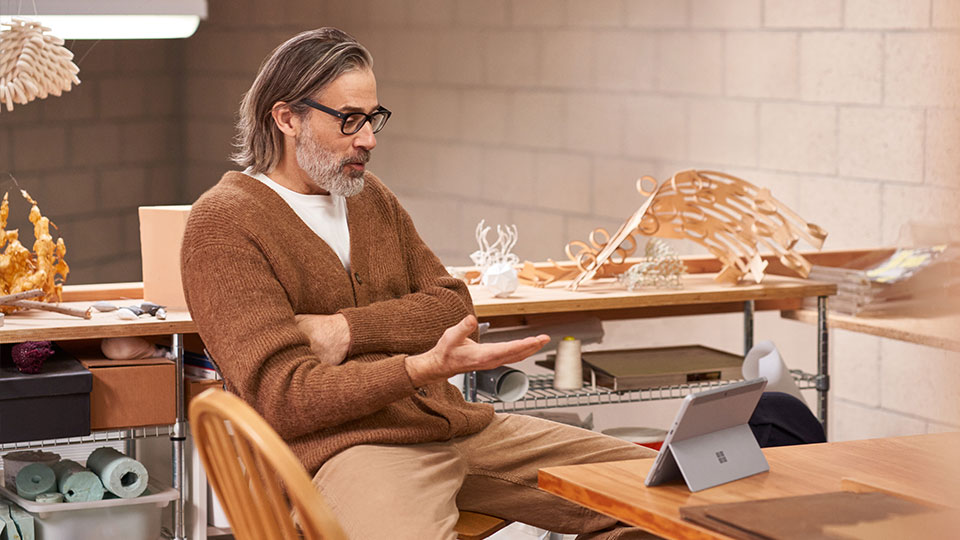The past two years have led to a dramatic shift in the way we work. Initially, there were questions about whether or not remote work could be productive (turns out, it can be!) and later people started thinking about long-term strategies and retention. The battle for talent ramped up because great workers could work anywhere without geographical constraints as people started to embrace the hybrid workspace.
The perks of working from “anywhere” aside, being away from the office can make work feel transactional—lonely, even. Many companies were quick to ramp up virtual happy hours, establish best practices for chat and video calls, and surprise employees at home with company swag and delivered lunches. But, most of those efforts didn’t dig deep enough to actually address the core problems.
At the end of the day, our happiness is intertwined with feeling connected to others. In the same way that happiness outside of work is strongly connected to friends and family, fostering a healthy web of workplace relationships is essential to being happy at work.
You can’t shove the office into an online meeting, but you can work to build solutions that foster relationships intentionally.
Building connections
In the old workspace paradigm, relationships were based on convenience. You connected with those who happened to be close to you—at the coffee machine, in a shared cubicle, in the same 10 meetings every day. Things happened organically and a lot was based on happenstance.
But this also meant a lot of potential opportunities were missed. Chances are, you know your team and direct manager, but your connection to the wider leadership and the rest of the team was usually limited. Thanks to the disruption of the workplace over the last couple years, we’ve realized that virtual data adds a much-needed layer to this web of connections.
If you remember one thing about the future of work, remember this: An employee has a much larger pool of positive and impactful connection options when they are no longer constrained by geography, by their building, or by the floor that their desk occupies. As a leader, you need to take a step back before you tackle things and think about how to connect and engage.
I realize that’s no small task, there’s a lot to test depending on team and team size. There’s no single answer that works for everyone, but there are a lot of potential creative solutions. This is what we specialize in at Mystery. We aim to make people as happy as they can possibly be at work by improving engagement outcomes and fostering connections through data-driven virtual experiences. By creating focused and informed experiences, our clients have reported a 30% average improved event attendance, and a 66% average increase in team connectedness thanks to our solutions.
Connectedness matters
What do we mean when we walk about establishing “connections”? We believe that relationships are based on three pillars: Familiarity, similarity, and vulnerability.
- Familiarity. You get to know people and share similar interests or get a little vulnerable with them and then you feel more connected.
- Similarity. The more familiar people are with one another, the more they notice the things they have in common, both in the workplace and in life. Familiarity and similarity breed trust. And trust increases employees’ faith in where the company is going.
- Vulnerability. When you trust a coworker, you begin to be more open. This enables you to take more risks and know that you have reliable support. When you are better connected, your company productivity and retention increase. All of this is fueled by trust.
Understanding these pillars is essential to establishing deeper, more meaningful connections. And establishing those deeper peer-to-peer and employee-to-leadership connections is how an employee develops a sense of belonging and loyalty to their organization. It’s the essential piece that ties morale to the bottom line.
The power of shared experiences
At Mystery, our approach varies depending on company goals. We can strengthen inter- and intra-team cohesion through shared experiences, and we can better connect staff to leadership, or better connect the team as a whole.
With our work at Microsoft, our focus is onboarding. To create more connectedness in the process, we gather onboarding data and information from others on the team. Mystery can do the work of matching people with similar interests, using data to increase connections tactically.
If you’re interested in improving the remote team dynamics at your startup, here are a few tips on how to better connect people:
Test things out with your own team
We do “Mystery at Mystery.” In other words, we believe in testing everything we sell (and often then some). We’re the first users for anything we offer. We measure everything within our team and we constantly ask for feedback. This helps us empathize with our customers and has made us an even stronger team. I’d encourage you to explore ways that you and your team can incorporate your own company’s products or services in a similar way. I believe you’ll be pleasantly surprised with what it inspires.
Foster creativity and trust
I tell the team that if they have an idea, we will test it. If it works, we will sell it. During the pandemic, we faced some major challenges and ended up pivoting the business from a real-world dating package to a virtual workplace tool. Succeeding with those pivots was absolutely due to our amazing team and their creative approaches. We genuinely trusted everyone to do great work and empowered them to lead change. We trusted that we would only be able to figure things out as a team. That pivot? It came from a team member in his first week at Mystery who was immediately given the trust and space to suggest it.
Ruthlessly focus on your customer experience
One of our company values is to have ingrained empathy. We believe in deeply understanding the customer journey, in being able to feel their struggles and pain points for ourselves. In our early days, this meant I would spend countless hours reading about how to open a restaurant so I could understand a restaurant owner’s main concerns. Today, our primary customers are Chief People Officers, and it’s just as important for me to sit in their seats. Thinking about things from their points of view not only helps our team understand how we can solve our customers’ biggest problems, but when we do solve them, our customers become our biggest advocates.
We’re not waiting for the future of work to arrive. It’s already here. You’re living it. The more we learn to embrace the benefits of hybrid and remote environments, the more we’ll be capable of building the companies we want to build, with the talent we want to work with. And, big bonus, people will be way happier doing it.












